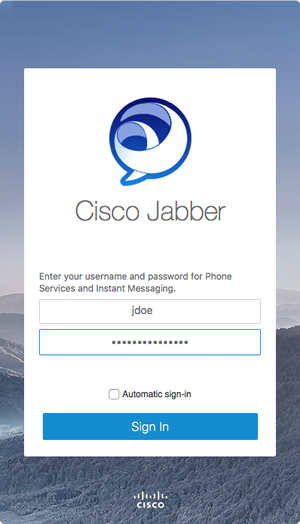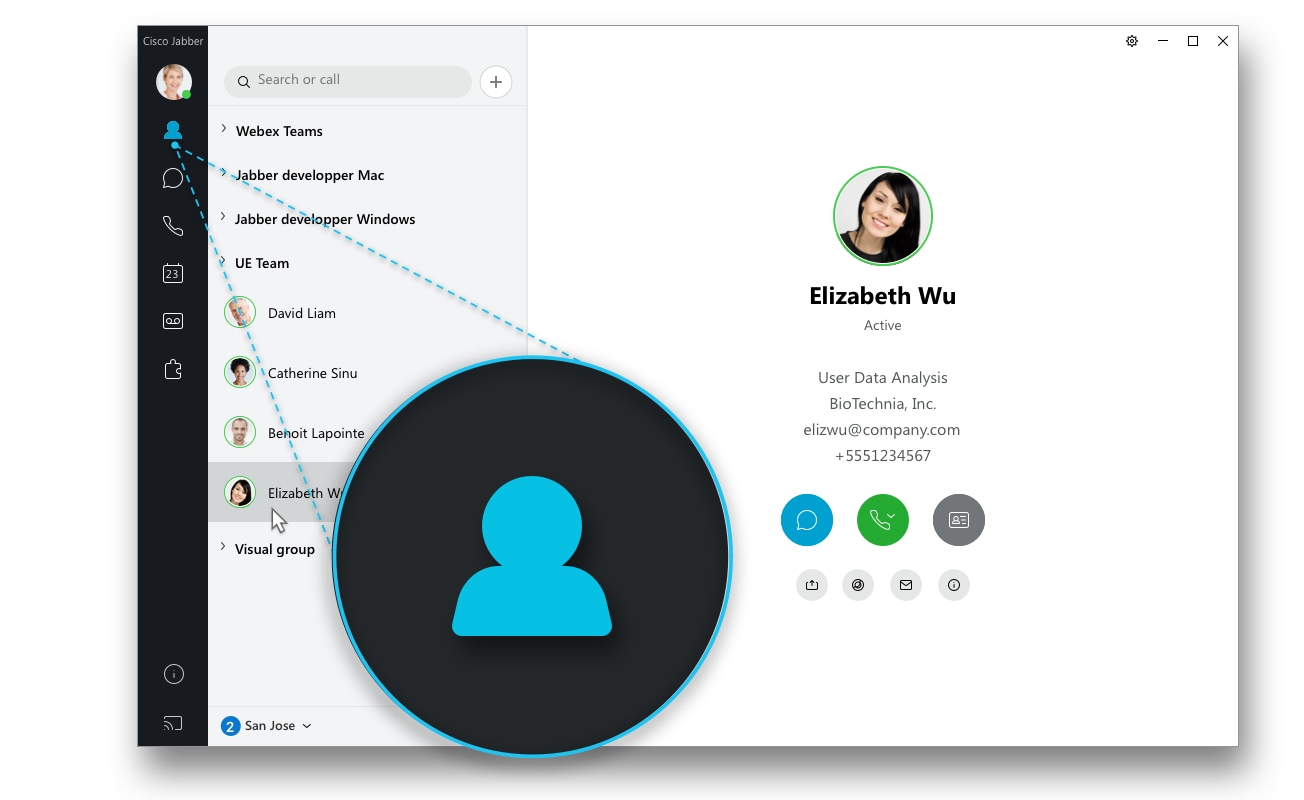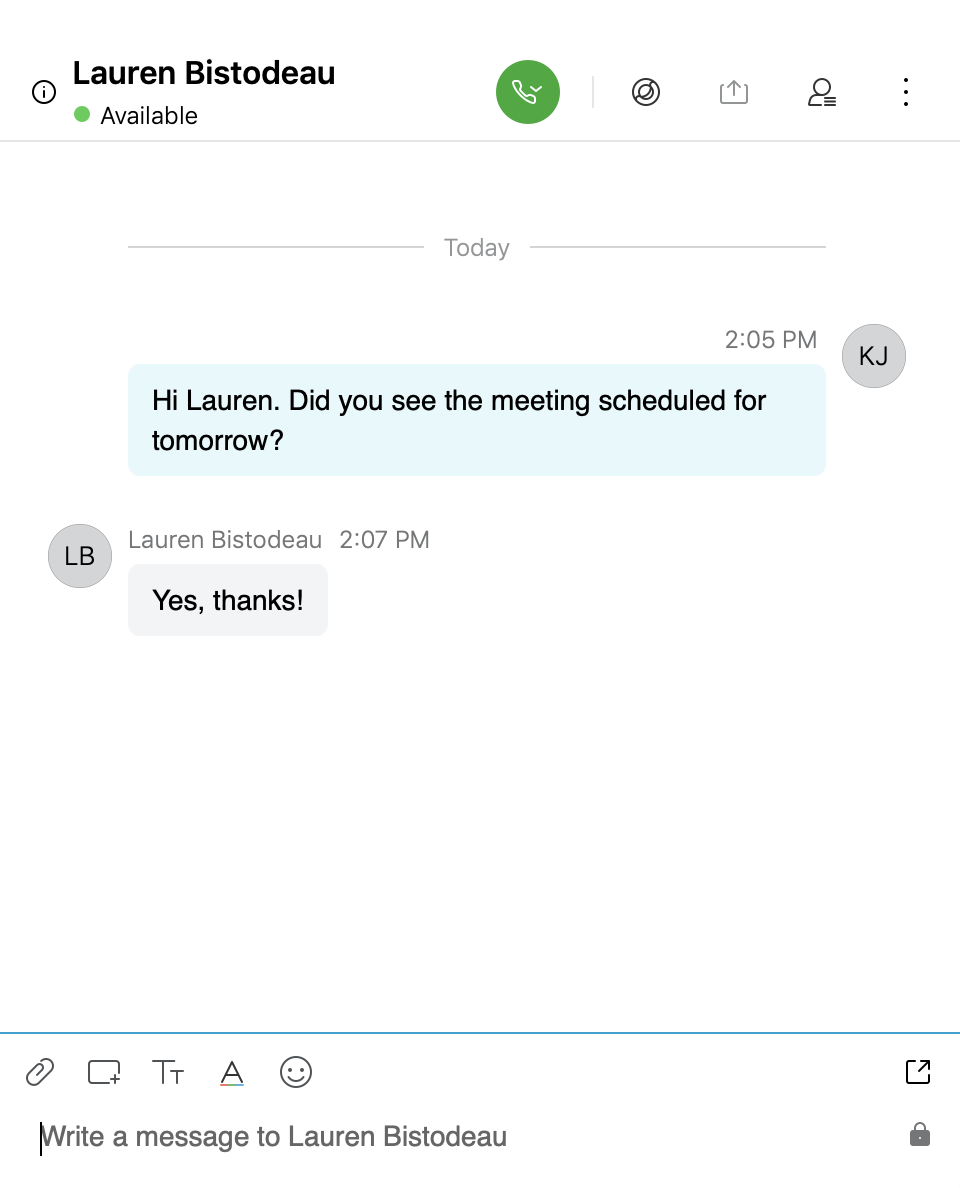Increasingly, many of us find ourselves working outside the office. So having access to the communication channels you need from anywhere is a requirement to stay productive. Stanford’s Jabber service gives you that while simultaneously simplifying and unifying your communications with your colleagues. With your computer or a mobile device — and an Internet connection — you can instant message, place voice and video calls, share your desktop, conference, and more.
Features
Cisco Jabber for Mac. Collaboration tools for Mac users. Collaborate securely and more effectively with colleagues, business partners, and customers. Empower employees to work together efficiently by bringing instant messaging, audio, video and web conferencing, enterprise voice, and visual voicemail into one desktop client. Jabber For Mac Screen Sharing Install windows from usb command prompt. A vulnerability in Cisco Jabber Client Framework (JCF) for Mac Software, installed as part of the Cisco Jabber for Mac client, could allow an authenticated, local attacker to execute arbitrary code on an affected device. Download Cisco Jabber or Cisco Jabber VDI. Also available on Apple App Store or Google Play Store.

Now you can open the Jabber app with KerberosID / Kerberos Passphrase How to install and configure Jabber for Mac. NOTE: These instructions must be performed from your Mac and must be followed EXACTLY and in order. Download the setup file - Cisco Jabber Mac. To install Cisco Jabber 2019 For MAC, you will need to install an Android Emulator like Bluestacks or Nox App Player first. With this android emulator app you will be able to Download Cisco Jabber full version on your MAC PC and iOS/iPAD.
Here are just some of the features available to you when using Jabber.
Softphone — use your computer as your Stanford telephone, including placing, receiving, and forwarding calls.
Chat — instant message with other Jabber users, individually or in group chats, including your colleagues in Stanford Health Care (SHC) and Stanford Children’s Health (SCH).
(Note: If you work withHigh Risk data that includes protected health information, you must use Jabber for an instant messaging tool. Otherwise, Stanford Slack is the primary instant messaging tool for university faculty and staff.)
(Note: Chat history is only available for Stanford University users. This feature is disabled for Stanford Health Care (SHC) users for security reasons.)Video conferencing — place ad hoc video calls when in a chat or softphone conversation with your university colleagues.
(Note: Zoom is the primary video conferencing tool for university faculty and staff.)Screen sharing — share your computer screen when chatting or in a video conference.
Screen capture — take and share a screenshot when chatting or in a video conference.
File sharing — share files with your colleagues.
(Note: File sharing is only available for Stanford University users. This feature is disabled for SHC users for security reasons.)Contact lists — create contact lists of those you collaborate with most often, including an easy-to-use contact search feature.
Presence — set your availability so others see whether you are available for a chat or call; see the availability of others.
Designed For
University, SHC, and SCH faculty and staff
Data Security
For Stanford University affiliates, Jabber is approved for Low, Moderate, and High Risk Data.
Rates
Jabber is provided at no charge as part of the telecommunications service.

Get Started
Download Jabber For Mac
Download and Install Jabber

To get started, you’ll need to download and install the Jabber application. Select your platform.
Use Jabber
The Jabber application looks and works a little differently depending on the platform you’re using. See our Quick Guides to get started.
Get Help
- University affiliates: Submit a Help request.
- SHC affiliates: Call 650.724.4357 (4-HELP).
- SCH affiliates: Call 650.498.7500.
Jabber For Mac 12.7 Download
See Also
Cisco Jabber For Mac 12.1 Download

Jabber App
- For information about using Jabber Softphone, visit the service homepage.
- The video conferencing medical interpreter application (VMI) is a specialized SHC service launched through Cisco Jabber. Visit the VMI service page to learn more.
- Jabber software integrates directly with Proximity to ensure a seamless user experience when you want to share content wirelessly.
